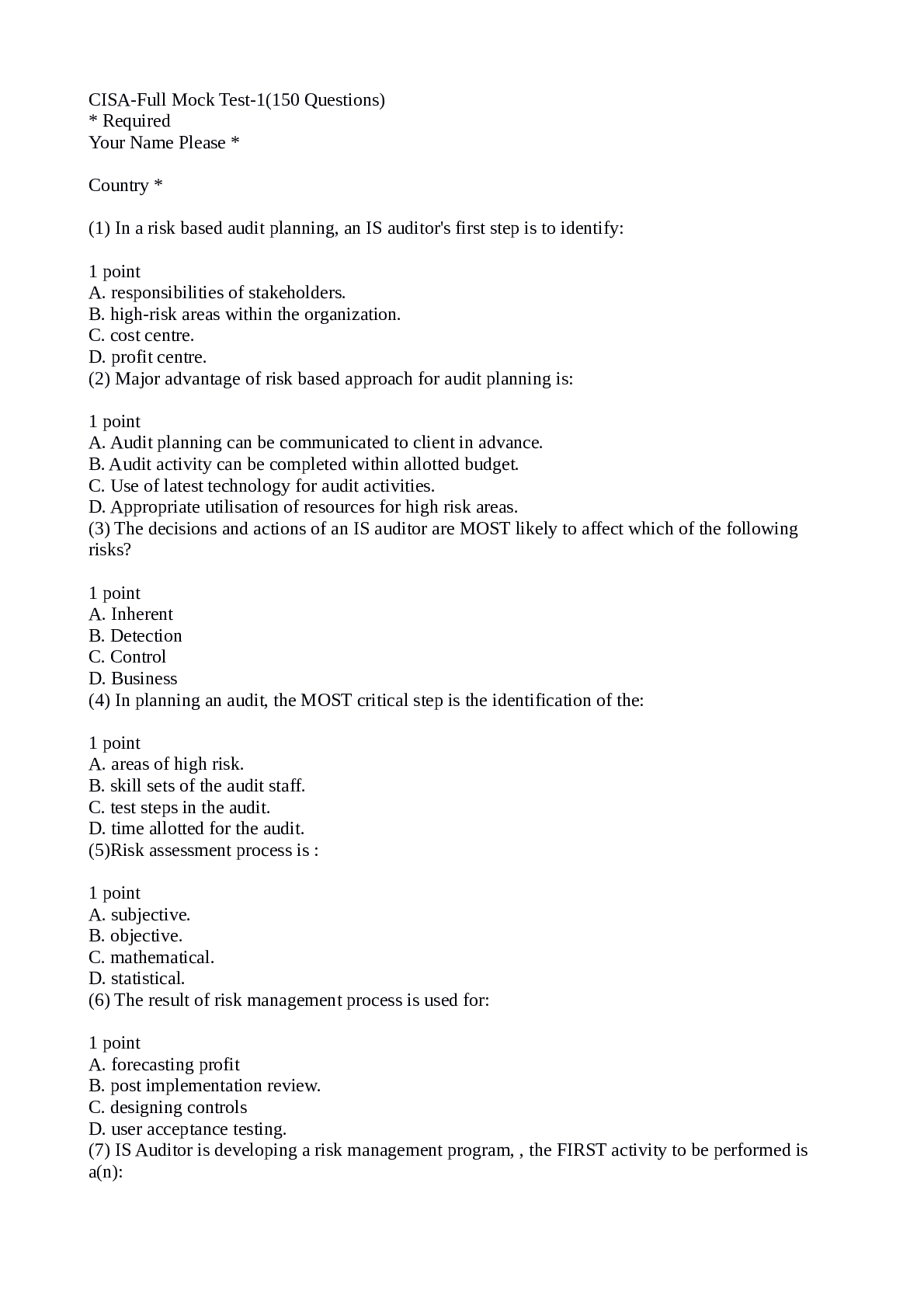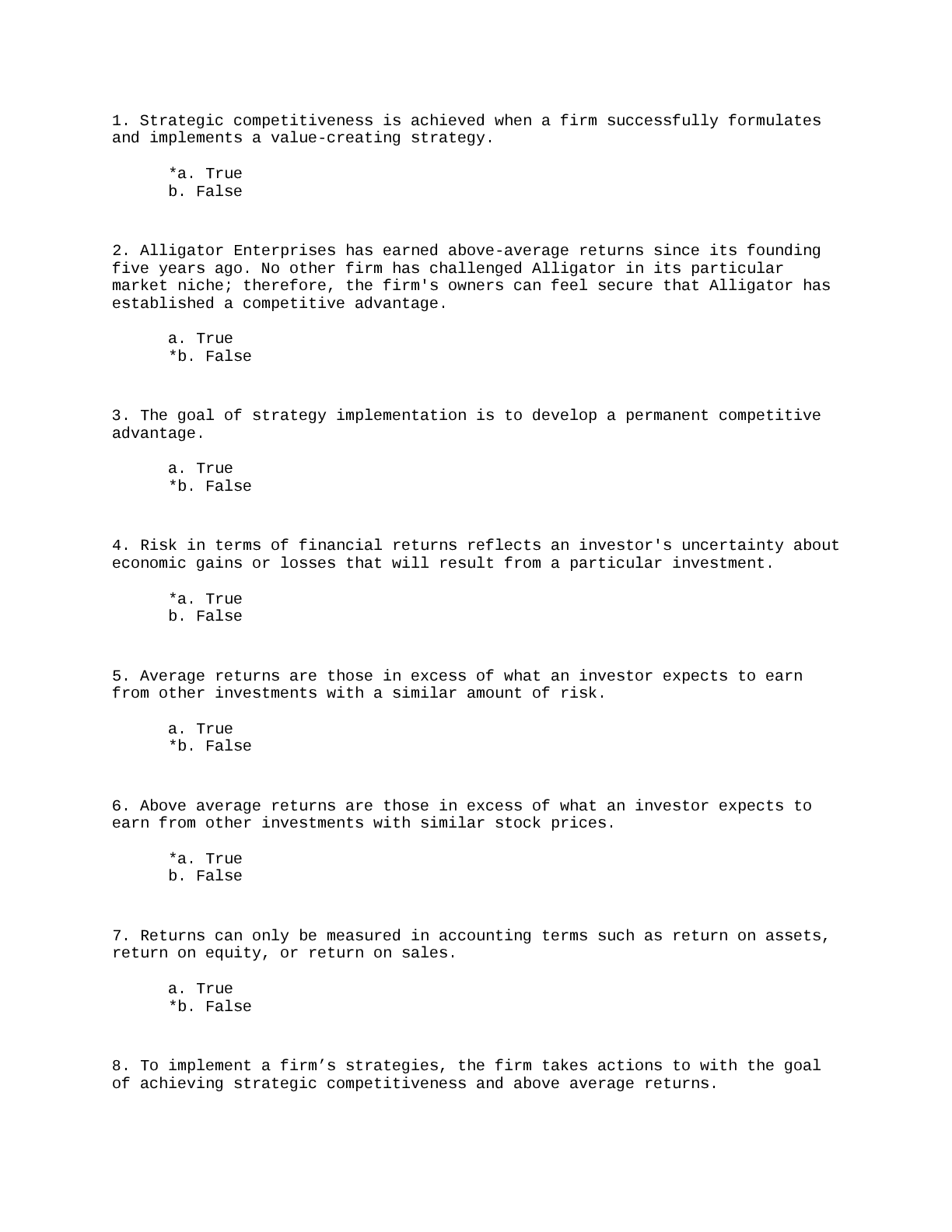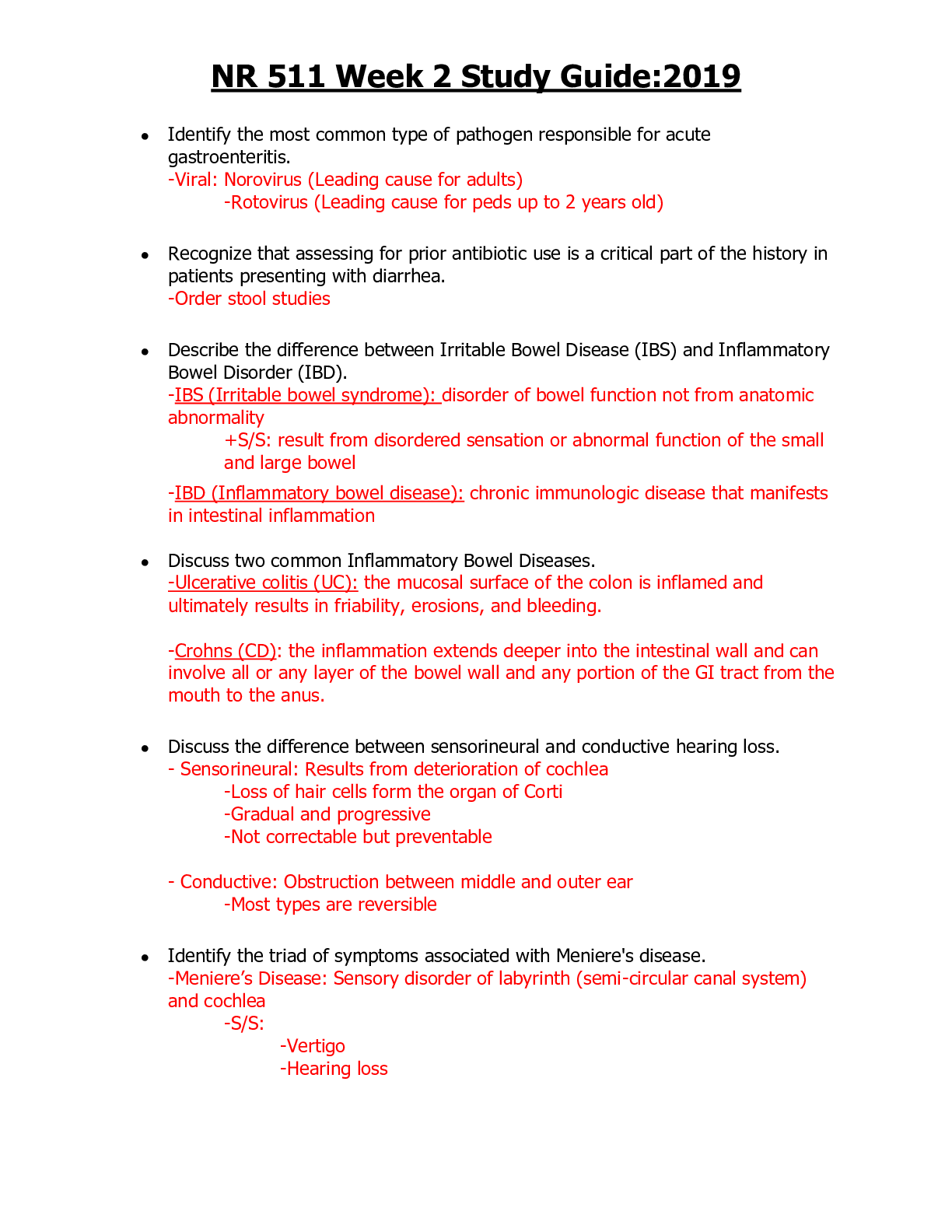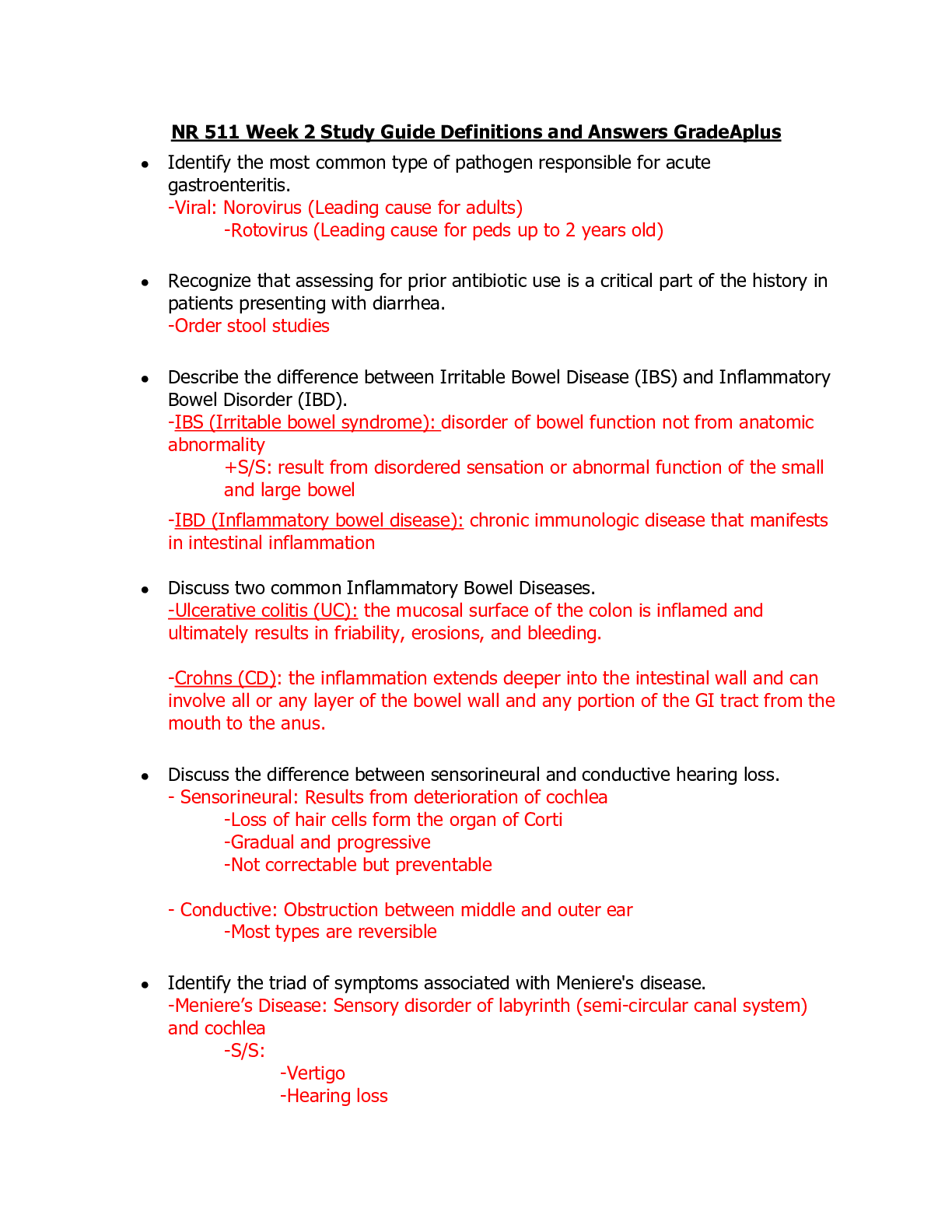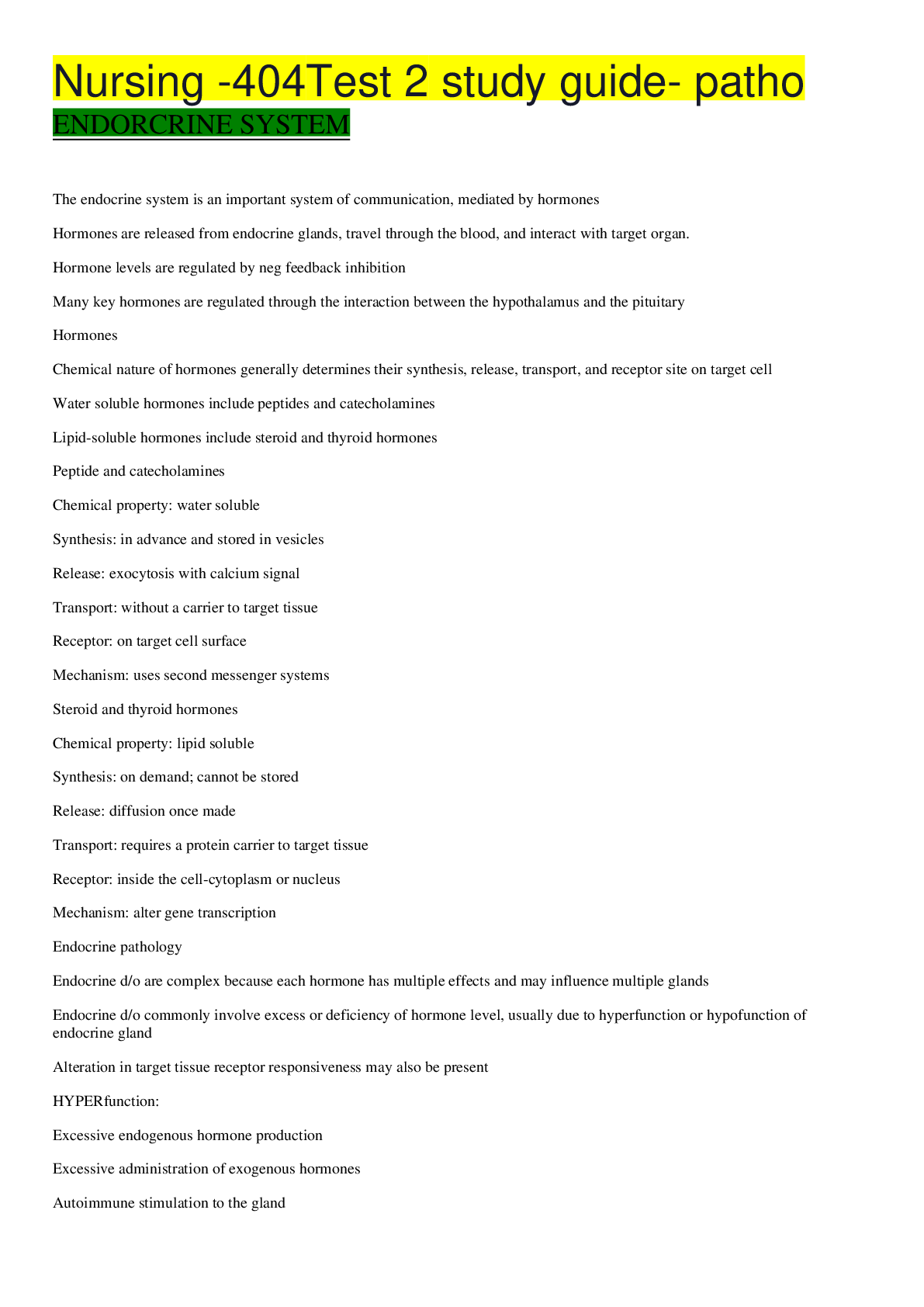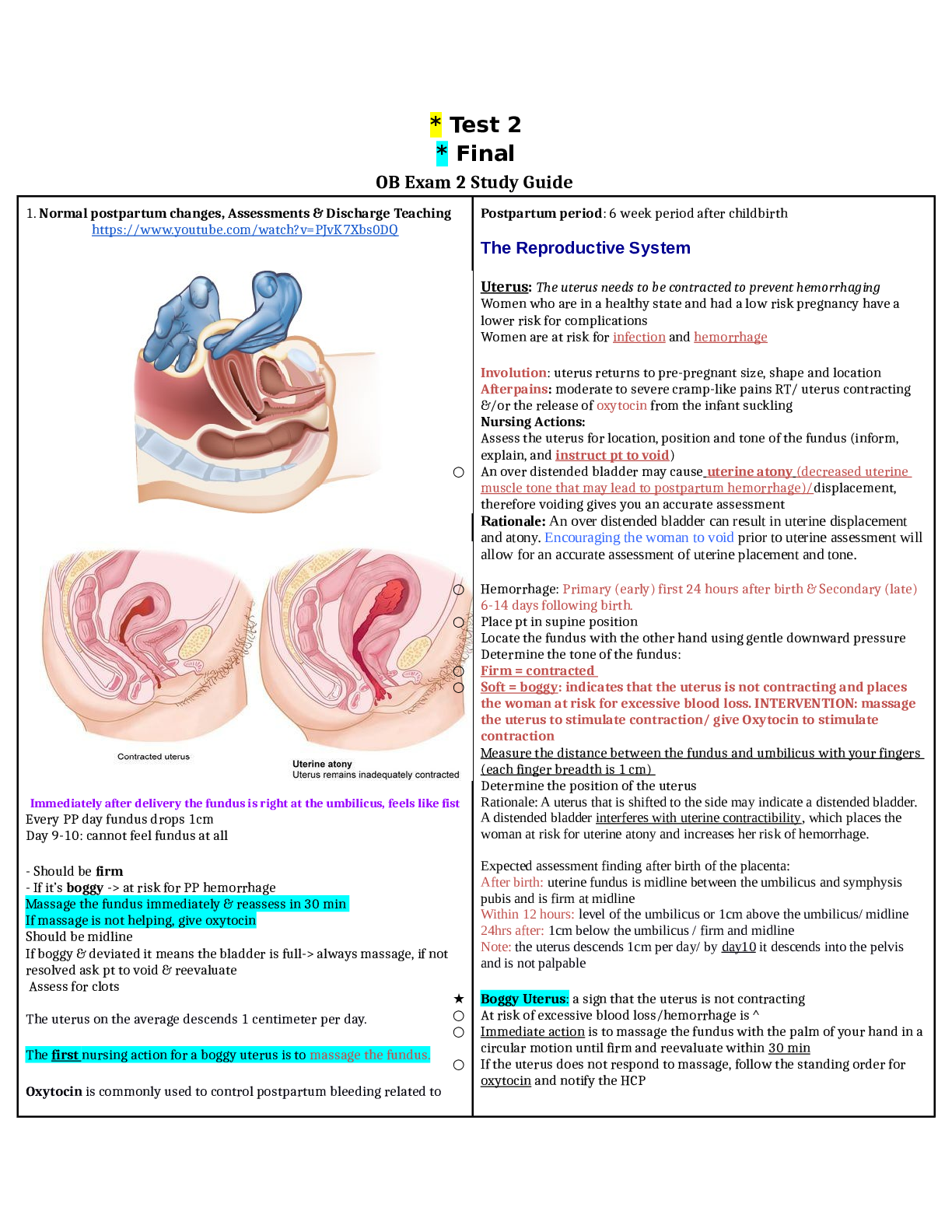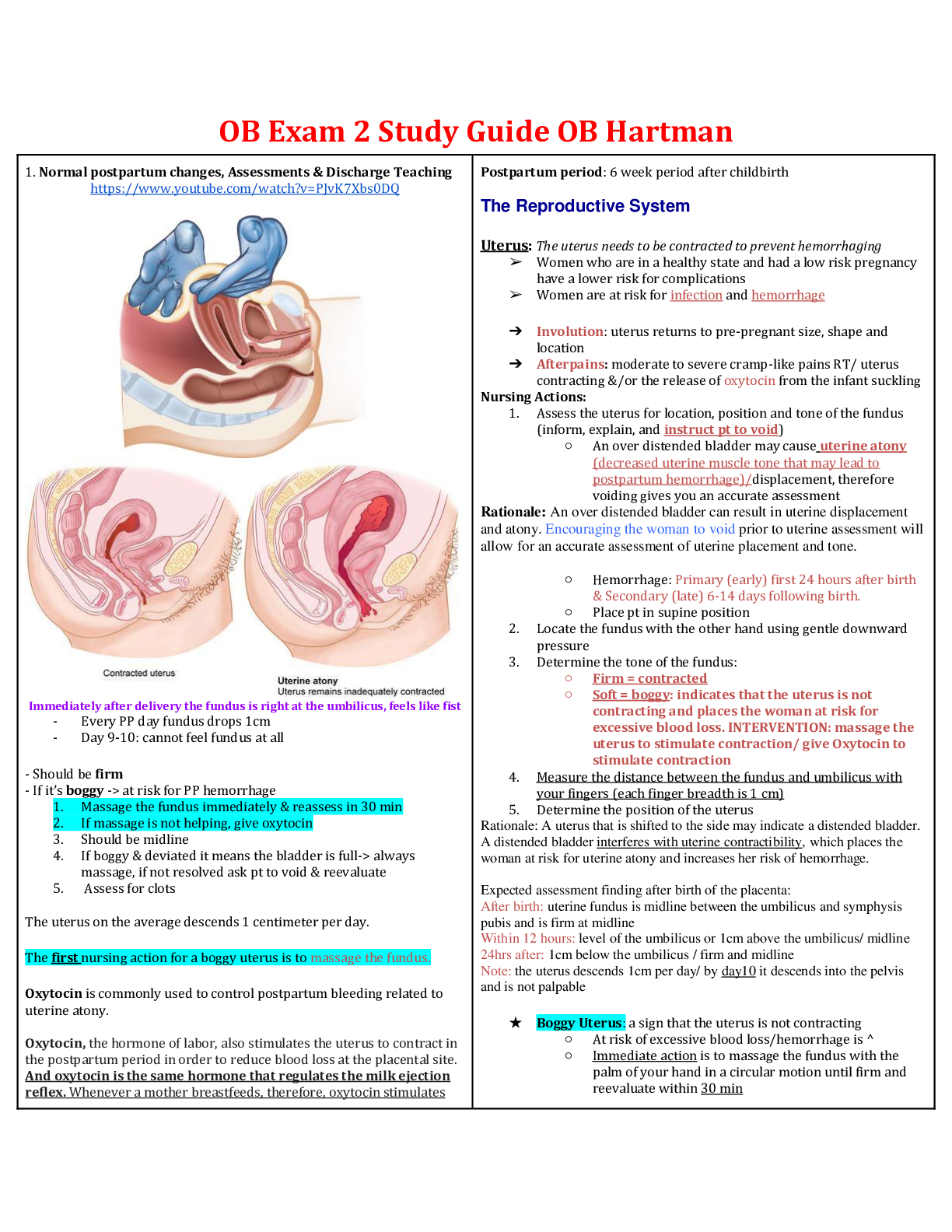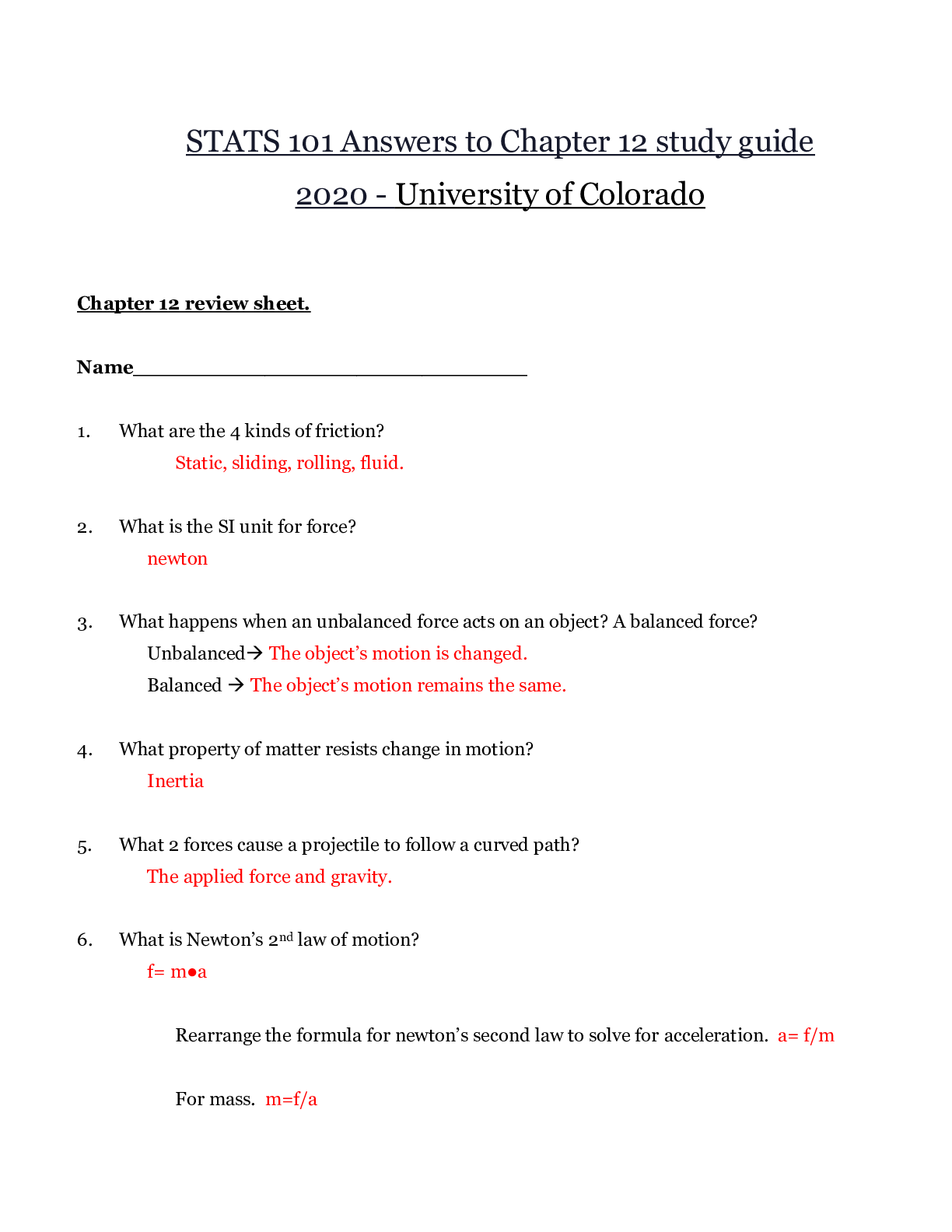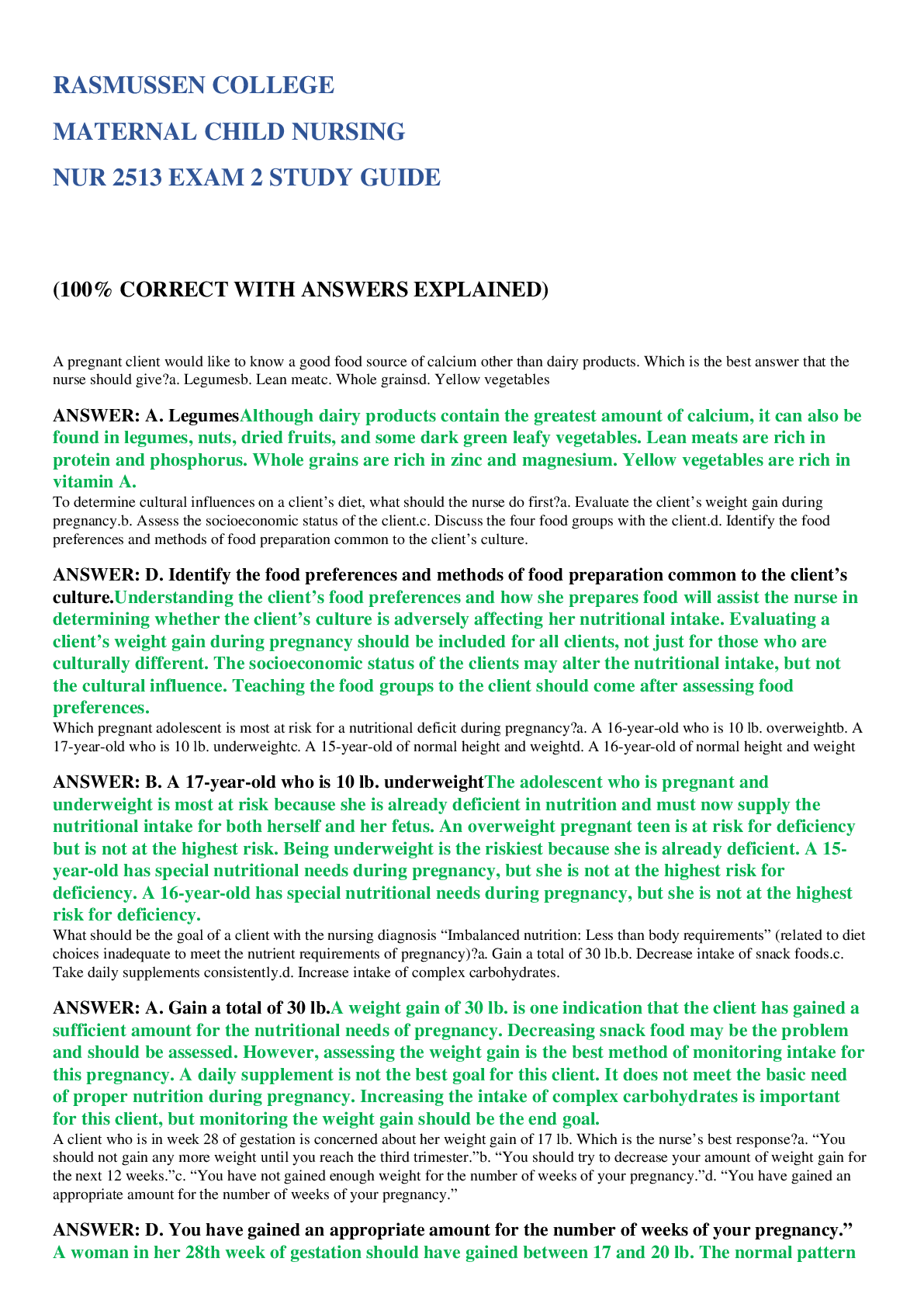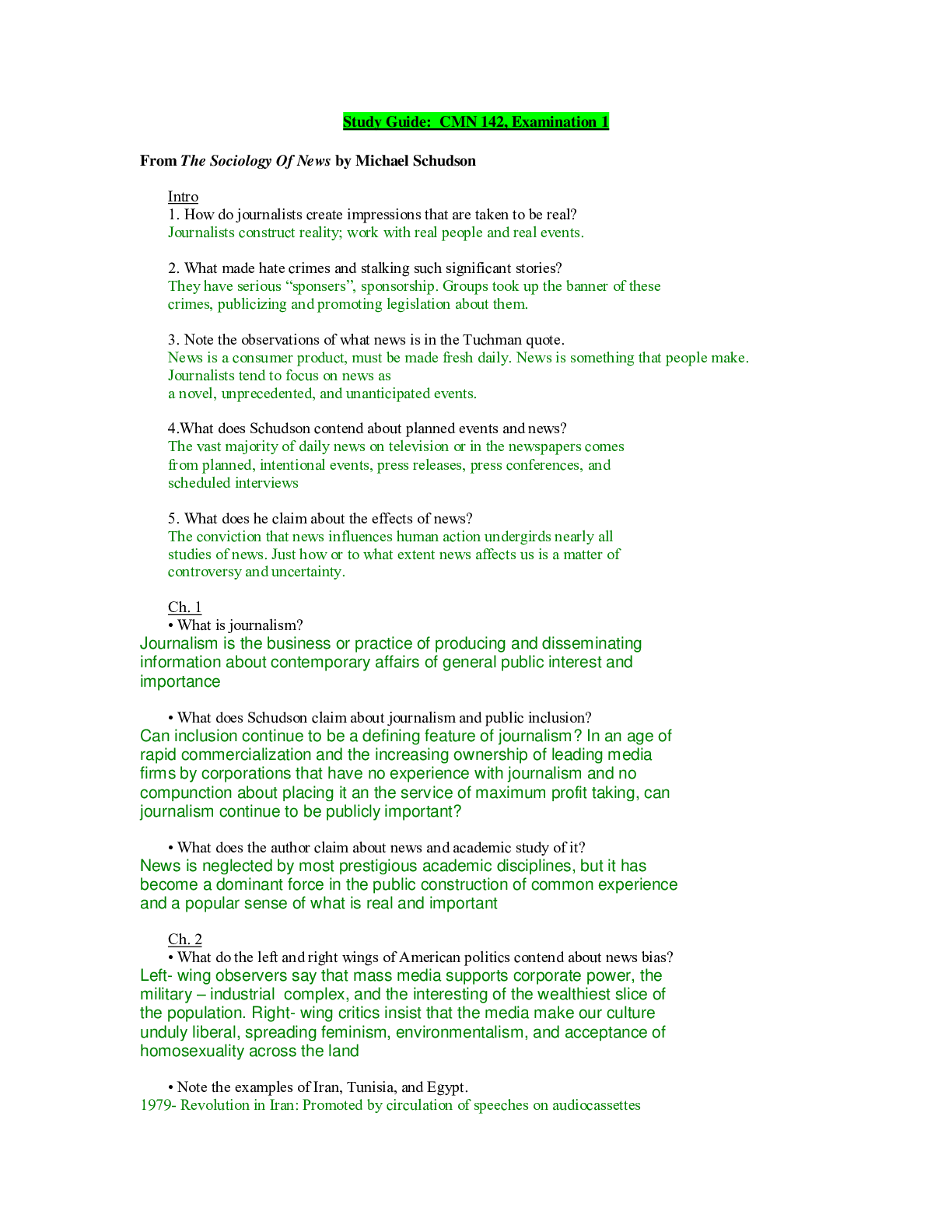Dimensions Exam 2 study guide
Document Content and Description Below
Dimensions Exam 2 study guide Chapter 3: 1. What can be expected of a system that has a high degree of nonsummativity? 2. How can most living organisms be classified in general systems... theory? 3. Identify the major component for the maintenance of health used in the Roy Adaptation Model of nursing. 4. “Stimuli” in the Roy Adaptation Model is synonymous with which element in systems theory? 5. How is health described in the Roy Adaptation Model of nursing? 6. Identify the two concepts upon which the framework for assessment is based in the Roy Adaptation Model of nursing. 7. In the Roy Adaptation Model of nursing, the second-level assessment modes are most closely related to which part of the system? 8. Why is it important for nurses to understand and use a nursing theory or model in practice? 9. Identify the four concepts that are common in most nursing theories. 10. What belief forms the basis for the Orem Self-Care Model? 11. Identify the primary goal of nursing in the Orem Self-Care Model. 12. Select a major contribution that King’s model made to the practice of nursing. 13. What aspect of Watson’s Model of Human Caring distinguishes it from most other nursing models? 14. Identify the most important aspect of caring according to Watson’s Model of Human Caring. 15. How is a “client” most accurately described in Johnson’s Behavioral System Model? 16. Upon which principle is Neuman’s Health-Care Systems Model based? 17. What is a key function of the nurse in Neuman’s Health-Care Systems Model? 18. In what way have advanced practice nurses most contributed to the development of theories and models in nursing? 19. When a number of middle range theories are used to investigate the same or similar concepts over a period of time, they: 20. Identify the statement below that is not an accurate characterization of middle range nursing theories. 21. Identify the statement that is most accurate concerning middle range nursing theories. 22. Identify the primary role of the nurse in Swanson’s Theory of Caring. 23. Which of the following is an essential element in Parse’s the Man-Living-Health Model? 24. Identify the primary role of the nurse in Parse’s the Man-Living-Health Model. MULTIPLE RESPONSE 1. Select all of the factors that are key to Pender’s Health Promotion Model that are linked to a person’s motivation to improve his or her health status. 2. Select all of the caring processes that are essential in Swanson’s Theory of Caring for the successful transition to health experienced by clients. 3. Select all of the characteristics of middle range nursing theories. 4. Select all of the elements that are considered key to the King’s model of nursing. COMPLETION 1. Fill in the blank with the correct word(s) to complete the following statement: The nursing profession uses the term ______________ when attempting to explain apparent relationships between observed behaviors and their effects on a client’s health. Chapter 6: 1. What is best described as the concepts, ideals, behaviors, and significant themes that give meaning to a person’s life? 2. What are rules of conduct that protect the social fabric? 3. What term is best defined as standards of right and wrong that often are based on religious beliefs? 4. Identify the term defined as systems of valued behaviors and beliefs. 5. As nurses achieve increased professional autonomy, what must they also accept? 6. What is the primary function of an ethical code? 7. Identify the system of ethical decision-making that has as its focus a concern for efficiency and utility. 8. Provision number 1 of the 2001 Code of Ethics for Nurses states: “The nurse, in all professional relationships, practices with compassion and respect for the inherent dignity, worth, and uniqueness of every individual, unrestricted by considerations of social or economic status, personal attributes, or the nature of health-care problems.” On which ethical principle is this statement primarily based? 9. Identify the statement that most accurately compares the ethical code for nurses with the law. 10. Provision number 6 of the 2001 Code of Ethics for Nurses states: “The nurse participates in the advancement of the profession through contributions to practice, education, administration, and knowledge development.” On which ethical principle is this statement primarily based? 11. Identify the name of the system of ethical decision-making that is based on the “greatest good” principle. 12. Identify the system of ethical decision-making that is based on the discovery and confirmation of a set of morals or rules that govern the ethical dilemma. 13. What is the ethical principle that requires that the primary goal of health care and nursing is to do good for others? 14. What is the best definition of the ethical principle of nonmaleficence? 15. Identify the term used when an ethical situation arises in which there is a choice between two equally unfavorable alternatives. 16. What is the first step in the ethical decision-making process? 17. Identify the outcome that best demonstrates a critical care nurse’s successful application of the ethical principle of nonmaleficence to the care of a client who has experienced a cerebrovascular accident. 18. Identify the best method for a nurse to acknowledge a client’s autonomy. COMPLETION 1. Arrange the steps of the ethical decision-making process in their correct order. (Enter the letter of each step in the proper sequence; do not use commas or spaces.) A 2. Fill in the blanks with the correct word(s) to complete the following statement: Over time, popular acceptance of _______________ rights can give them force of _______________ rights. Chapter 7: 1. What conclusion can be drawn about abortion based on the Roe v. Wade decision? 2. How does the deontological approach to ethics consider abortion? 3. How does the teleological approach to ethics consider abortion? 4. What are the primary ethical issues involved in genetic research? 5. Identify the nursing action that is most important for nurses to ensure when assisting in genetic screening procedures such as amniocentesis. 6. A 9-month-old baby who is developmentally delayed is tested for genetic abnormalities. After the results are back from the laboratory, a representative from the client’s medical insurance company calls the nurses’ station on the phone and asks for the results of the tests. How can the nurse best respond to this request? 7. A nurse who works in a federally funded abortion clinic becomes aware that aborted second-trimester fetuses are being sent to a nearby university for research and transplantation. What should this nurse do with this knowledge? 8. Identify the two most important ethical issues surrounding organ transplantation. 9. A 16-year-old boy brought to the emergency room with a gunshot wound to the head is declared brain dead. His driver’s license identifies him as an organ donor, but the hospital staff is unable to locate his family for permission to take his organs. Another client in the same hospital will die within 24 hours without a heart transplant. The tissues of both clients match sufficiently for a transplant. What is the ethical course of action in this case? 10. An unresponsive 94-year-old woman who has recently had a leg amputated for terminal cancer develops renal failure. She has no living relatives. Although hemodialysis will prolong her life for several weeks to several months, her health-care team is having difficulty deciding if it should be initiated. What is the key ethical issue involved in this dilemma? 11. A client in the intensive care unit has a do not resuscitate (DNR) order on his chart. What does the nurse caring for him need to recognize about DNR orders? 12. A physician writes a DNR order for a competent client. Which individual may give permission for this order? 13. Which treatment modality would most likely be considered extraordinary? 14. What is the practice of allowing a client to die without the use of any extraordinary measures sometimes called? 15. Identify the two most important ethical issues that surround clients infected with HIV and those who have AIDS. 16. What is a potential serious problem when living wills are formulated long before they are to be used? 17. Upon what ethical principle do supporters of assisted suicide base their support for the practice? 18. What ethical principles are sometimes overlooked in attempting to identify and report suspected child abuse? 19. Identify the outcome that best demonstrates a critical care nurse’s successful application of the ethical principle of veracity to the care of a client who was diagnosed with late stage pancreatic cancer. 20. Identify the best method for a nurse to acknowledge a client’s autonomy. 1. Select all the elements that should be included in a living will. [Show More]
Last updated: 1 year ago
Preview 1 out of 26 pages
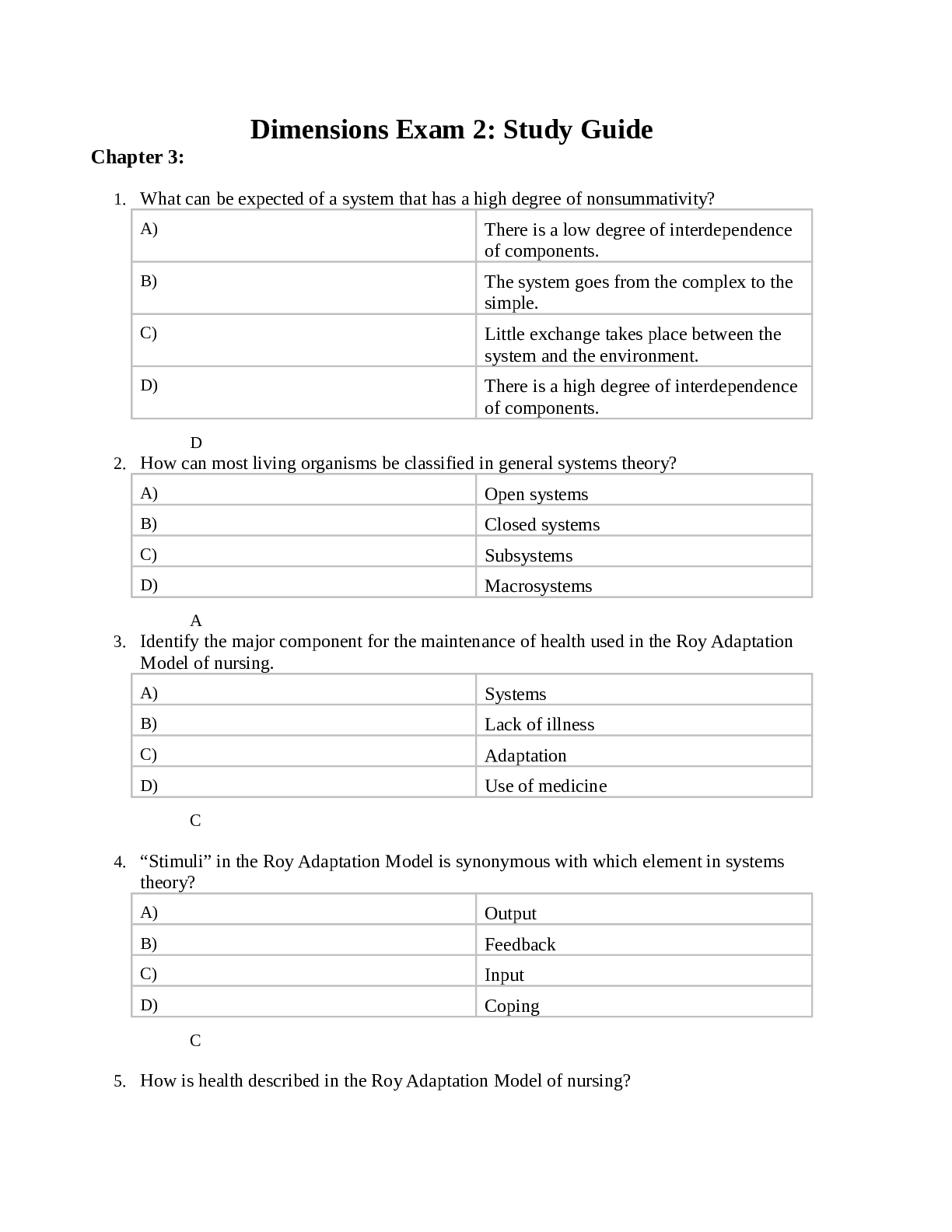
Buy this document to get the full access instantly
Instant Download Access after purchase
Add to cartInstant download
We Accept:

Reviews( 0 )
$15.00
Document information
Connected school, study & course
About the document
Uploaded On
Jan 09, 2021
Number of pages
26
Written in
Additional information
This document has been written for:
Uploaded
Jan 09, 2021
Downloads
0
Views
67

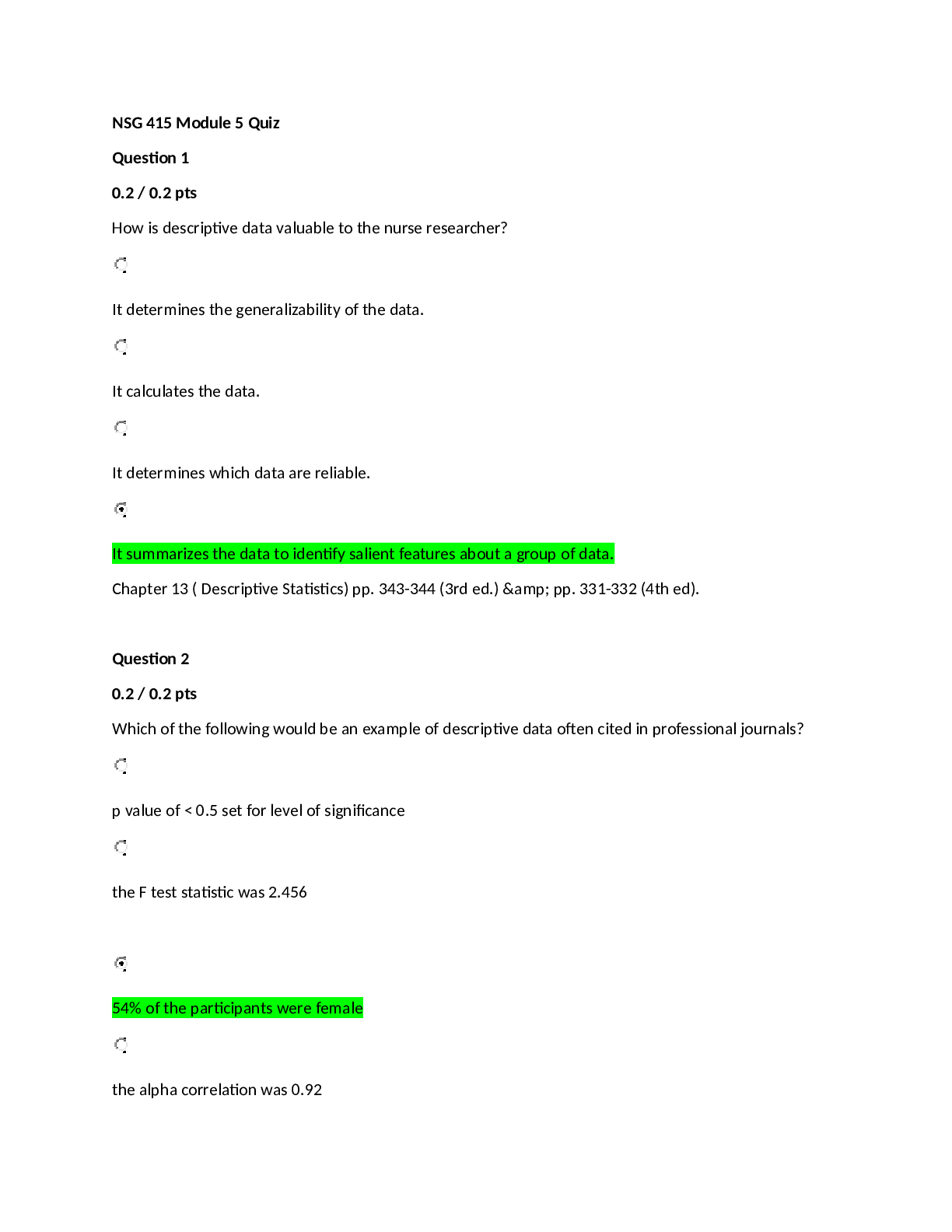


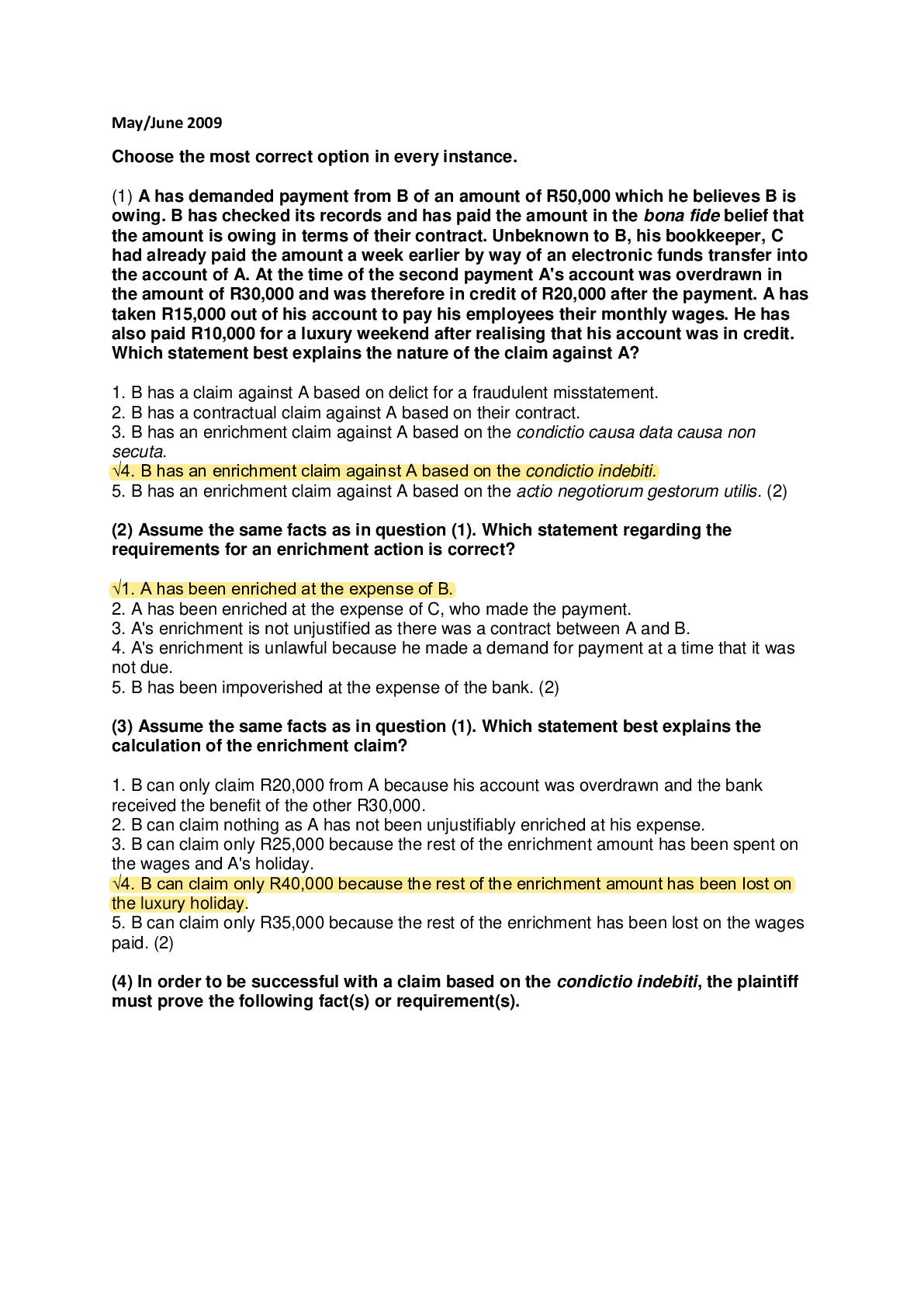
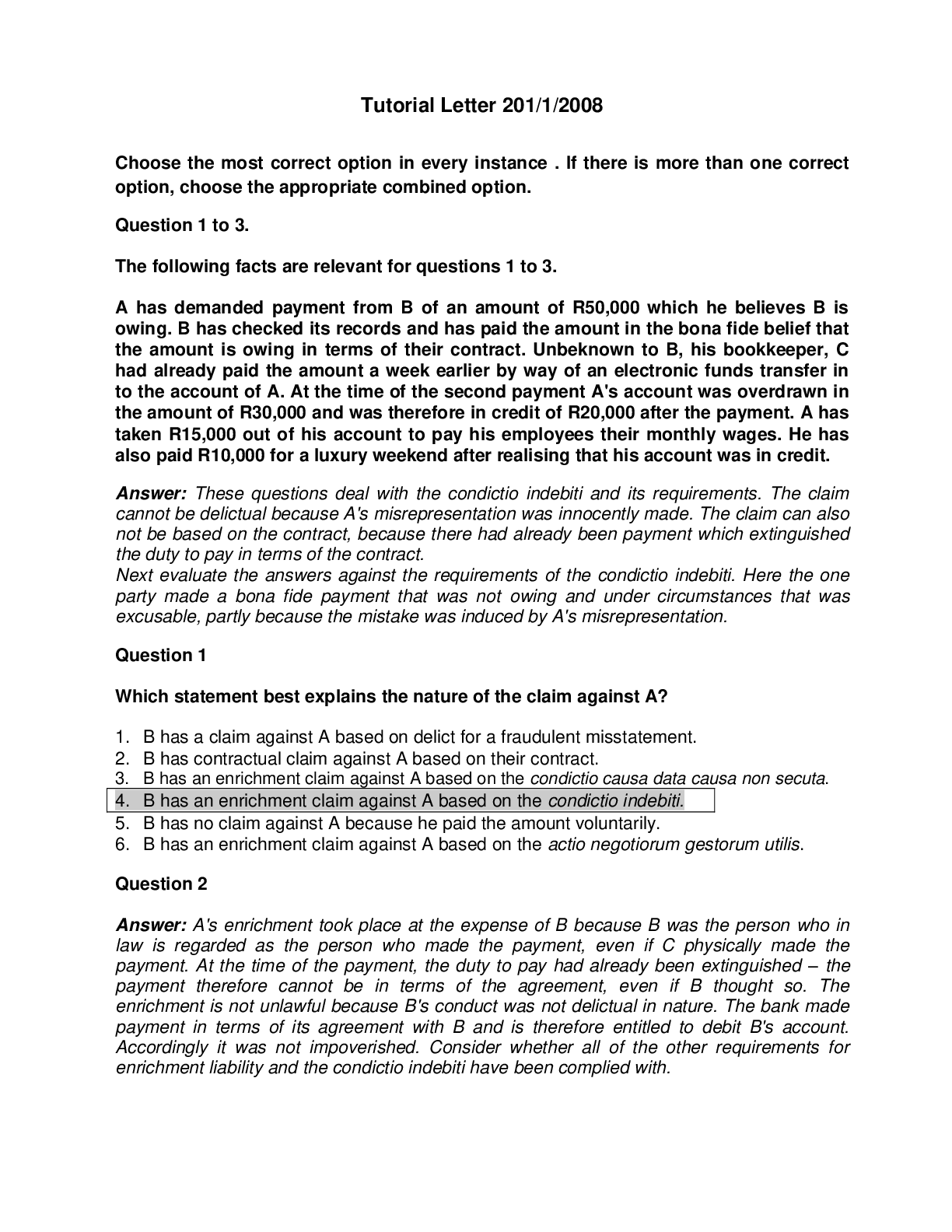
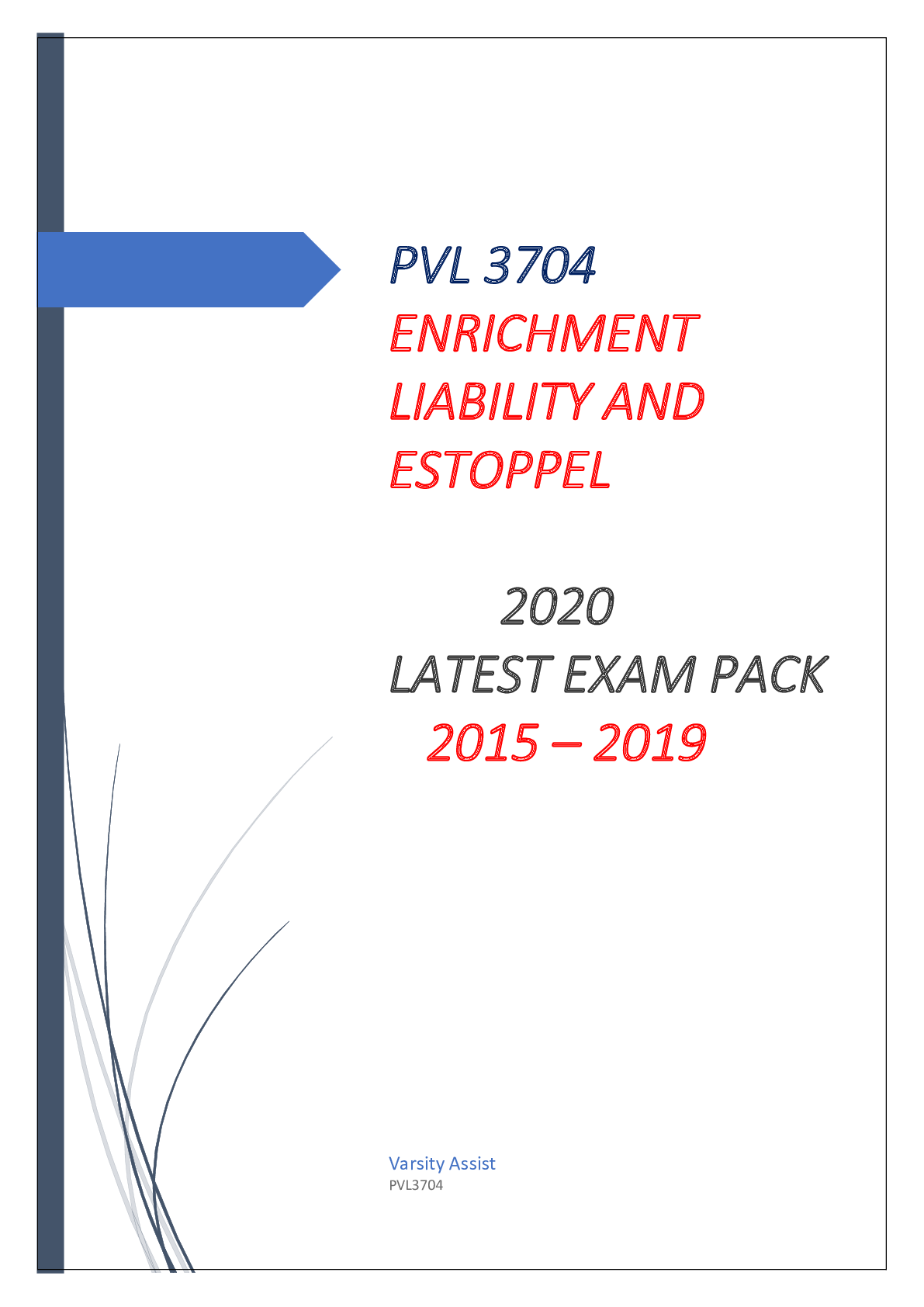


.png)
